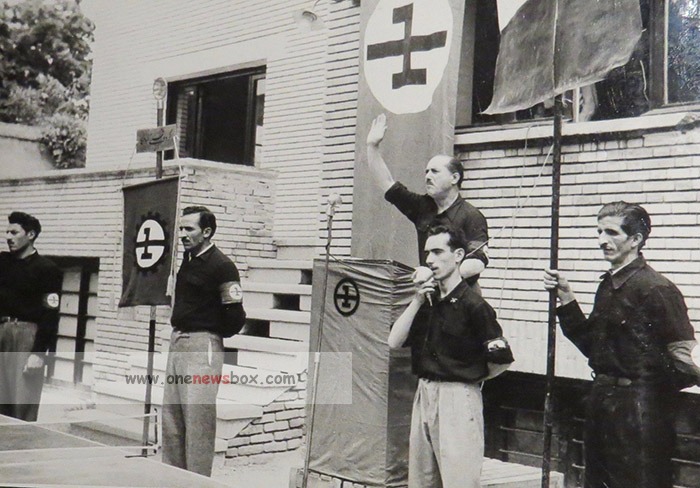After the war, Iranian students and nationalist intellectuals in Europe—many of whom were disillusioned by communism and Western imperialism—sought a charismatic leader to reorganize SOMKA. Manouchehr Mokri and other nationalists invited Monshizadeh, then teaching at the University of Alexandria, to return. He accepted, and under his leadership, SOMKA was reorganized as a structured political movement with branches in Tehran, Tabriz, Ahvaz, and other cities.
Organization and Aesthetics
SOMKA drew direct inspiration from the National Socialist German Workers’ Party (NSDAP). Members wore black and brown uniforms that mimicked Nazi SS attire. A bronze eagle emblem, simplified in design and adapted from the ancient Persian Faravahar, adorned their shirts and armbands. Monshizadeh himself designed the party’s insignia, which included stylized Aryan symbols replacing the Nazi swastika.
The party conducted marches, salutes, and public rallies, showcasing militarized discipline and ideological fervor. Though they professed loyalty and even respected the Shah, SOMKA’s symbolism clearly echoed Nazi Germany, including its obsession with race, hierarchy, and authoritarian leadership.

